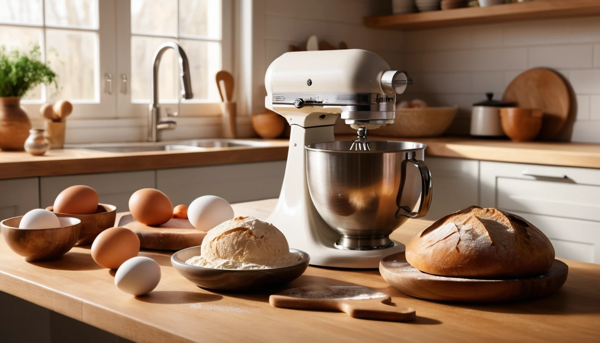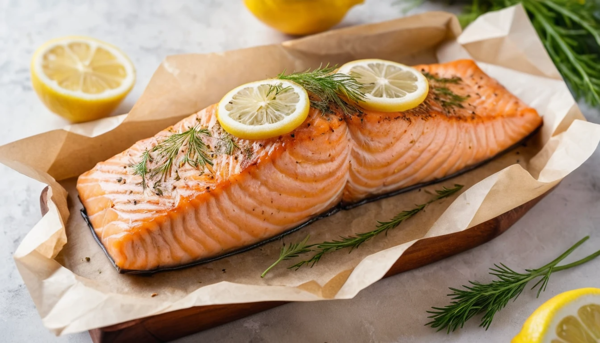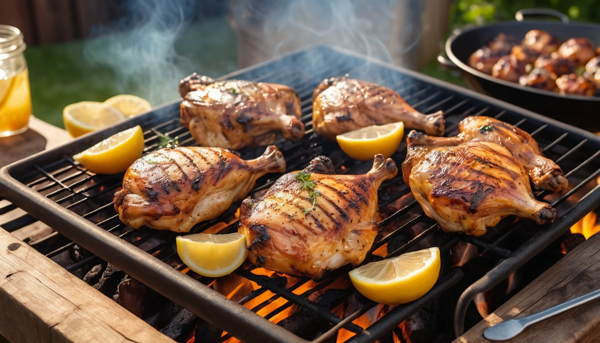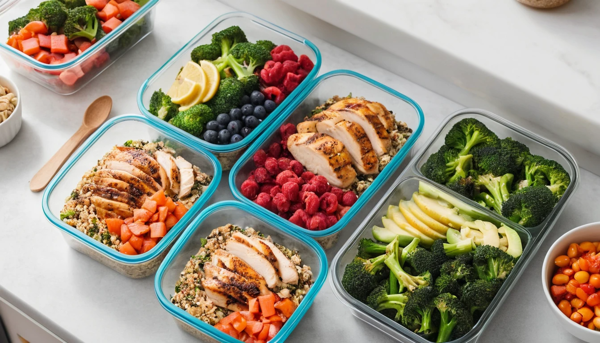Best cookware sets make your kitchen shine. Discover how to choose the perfect set, what materials matter, and top features to look for.
Best cookware sets deliver versatility, durability and excellent heat performance—choosing the right material (stainless steel, non-stick, ceramic, cast iron) and the right collection of pieces will turn your cooking experience from frustrating to fun.
Have you ever stood in the kitchen, staring at a stove full of mismatched pans and wondered: what would a great cookware set actually do for me? 🍳 Let’s cut through the clutter and get straight to it: if you pick the right cookware set, you’ll save time, enjoy better meals and feel confident when cooking. The key is to match your cooking style, budget and kitchen needs.
Here’s what we’ll cover: we’ll talk about search intent and what you’re really looking for, then dig into how to choose a fantastic cookware set (materials, pieces, brand, budget), show you what to avoid, and help you make a smart purchase with clarity and ease.
Understanding What You’re Looking For
When someone searches “best cookware sets”, they’re likely looking for:
- A buying guide that walks through how to choose.
- A list of top recommended sets or what to look for in one.
- Help to compare materials (stainless steel vs non-stick vs cast iron, etc.).
- Advice on size, pieces included, budget, and what works for their cooking style.
In short: the intent is informational + transactional—they want to learn what and why, and then possibly which one to buy.
To satisfy that, the article must include:
- Explanation of cookware materials and their pros/cons.
- What to look for in a set (pieces, quality, durability, compatibility).
- Highlight of features like induction compatibility, oven safe, dishwasher safe, non-toxic, etc.
- And ideally mention some highly rated sets or benchmarks of what “good” looks like.
- And a sense of budget vs premium options.
Best Cookware Sets: How to Choose Your Perfect Kitchen Upgrade
Why A Good Cookware Set Matters 😊
Having the right set of pots and pans isn’t just about style—it impacts your cooking experience. If your pans warp, stick, or heat unevenly, your food suffers and you’ll dread cooking. On the other hand, a well-designed cookware set can:
- Remove frustration when sautéing, searing or simmering
- Last for years (reducing replacement costs)
- Make clean-up easier and more enjoyable
- Be compatible across different stove types (gas, electric, induction)
Experts at Consumer Reports say you don’t need to break the bank—but you do need to match the set to your style of cooking.
Know Your Cooking Style (And What You Use Most)
Before you buy, pause and think: what do you cook most often?
- Do you sauté veggies, cook pasta, and heat sauces?
- Or do you sear steaks, braise meats, bake things in oven too?
- How many people do you cook for—solo, small family, big group?
These questions help determine the pieces you’ll use and material that fits.
For example: if you often sear meat and finish in the oven, you’ll benefit from a stockpot + skillet + Dutch oven that’s oven-safe.
If you’re only cooking simple meals for one or two, you might not need a huge 15-piece set with extras you’ll never use. Less is often more.
Materials Matter: What’s Inside The Set 🥘
Choosing the right material is perhaps the most important decision. Here’s a breakdown:
| Material | Pros | Cons |
| Stainless Steel (multi-ply/clad) | Durable, non-reactive, great for searing/browning | Needs oil to prevent sticking, may require more cleaning |
| Nonstick (PTFE / ceramic coating) | Great for eggs, pancakes, easy cleanup | Coatings may degrade, less suited for high-heat searing |
| Cast Iron (or Enameled Cast Iron) | Excellent heat retention, versatile for stovetop → oven | Heavy, needs seasoning (bare cast iron), may require more care |
| Carbon Steel | Similar to cast iron but lighter, gets better with use | Requires seasoning, may show wear |
| Copper / Aluminum Clad | Excellent heat conduction, professional feel | Usually expensive, more maintenance (especially copper) |
Research notes: Stainless steel is often recommended as the “best all-round” choice for most people due to its performance and longevity.
And for non-toxic options (avoiding certain nonstick chemicals like PFAS), stainless and ceramic coatings are strong choices.
How Many Pieces Should You Actually Get?
A “cookware set” can mean many things—8, 10, 15, even 20 pieces. But more doesn’t always mean better.
Here’s a quick guideline:
Essential pieces most people use:
- 10-inch skillet or fry pan
- 1–2 quarts saucepan with lid
- 3–4 quarts saucepan or pot with lid
- 5–8 quarts stockpot or Dutch oven
- Sauté pan or braiser with lid
When you see sets that include steamers, lid holders, etc., ask: will I use those? Experts warn that high piece-count may include pieces you never touch.
So rather than chasing “15-piece set” for the sake of it, pick a set that covers your real cooking needs and leaves room for future choices.
What To Look For: Quality & Construction
When evaluating sets, look for these markers of quality:
- Multi-ply or clad construction (layers of metal for even heating)
- Flat bottoms and tight-fitting lids for even heat and better simmering
- Handles and lids that stay cool or are well designed for safety
- Compatibility with your stove type (induction, gas, electric)
- Oven and dishwasher safety, depending on your habits
- Brand warranties or long-term support
These factors make a real difference in performance and durability.
Budget vs Premium: How Much Should You Spend?
You’ll find cookware sets from under $200 to several thousand dollars. But price doesn’t always equal performance.
Here’s a breakdown:
Budget friendly (under ~$300):
- Good for everyday cooking, shorter lifespan maybe
- Users may sacrifice some premium material or finishes
Mid-Range ($300-$700):
- Solid performance and materials
- Good balance of cost vs benefit
Premium (above $700):
- High-end materials, designer brands, heavier build, lifetime warranties in some cases
- Best for serious cooks or those who want to invest
Important: Some tests show that even budget-friendly sets can perform similarly to premium ones in lab conditions.
So pick your budget based on how often you cook and how long you expect the set to last.
Non-Toxic and Health Considerations
Many home cooks care not only about performance but also what’s in contact with their food. Some coatings contain PFAS or other chemicals. Experts recommend:
- Check if nonstick coatings are PFAS/PFOA free.
- Stainless steel (uncoated) and cast iron are safe bets for long-term durability and fewer concerns.
- Always follow manufacturer instructions (e.g., avoid overheating nonstick pans).
So if health and durability are high on your list, those aspects become a deciding factor.
Matching Set to Stove Type & Kitchen Setup
Your kitchen setup affects your cookware choice:
- Induction cooktop? You’ll need cookware with a magnetic base. Many experts emphasise this if you have or plan for induction.
- Gas stove? Fast changes in heat mean you appreciate good construction and handles that stay cool.
- Electric stove / glass top? Look for flat bottoms and good contact.
- Storage space? Big sets require room—if you have limited cabinet space, maybe a smaller set or stackable design is smarter.
Top Cookware Materials in Detail 🔍
Stainless Steel
Handles high heat, is often dishwasher safe, and is non-reactive (won’t affect your food’s flavor). Requires preheating and oil to avoid sticking.
Nonstick / Ceramic Coated
Great for delicate foods like eggs and fish. Easy cleanup. But less suitable for high-temperature searing, and coating will wear out eventually.
Cast Iron / Enameled Cast Iron
Cast iron: massive heat retention, excellent for searing and oven use, but heavy and needs care.
Enameled cast iron: similar benefits with easier maintenance (no seasoning needed).
Carbon Steel
Like cast iron but lighter. Requires seasoning. Great for fast sautéing or woks.
Copper / Aluminum Clad
Luxury material, super heat conduction. But often more expensive and needs maintenance (especially raw copper).
What Pieces Should You Definitely Have (And Which Extras Might Be Optional)
Must-have pieces everyday:
- Skillet/fry pan (10-12″)
- Saucepan with lid (1–2 qt)
- Medium pot with lid (3–4 qt)
- Stockpot or Dutch oven (5–8 qt)
- Sauté pan or braiser with lid
Nice-to-have extras (optional):
- Steamer insert
- Grill pan
- Wok with lid
- Specialty lids or helpers
If you rarely use them, skip them to save money and storage. Many experts say a smart, smaller set delivers better value than a massive set full of unused extras.
Maintenance & Care Tips
Buying a great set is only half the job—taking care of it matters too. Some tips:
- Hand-wash when possible, especially for premium materials (even if labelled dishwasher-safe).
- Avoid metal utensils on nonstick or ceramic coatings to prolong life.
- Preheat stainless steel before adding oil and food to avoid sticking.
- Season cast iron or carbon steel if required.
- Store carefully, ideally lids stored separately or nested so they don’t warp or get scratched.
Good care extends the life of your set and ensures consistent cooking results.
Storage & Kitchen Fit
Don’t forget the practical side: cookware fits in your kitchen and you use it regularly. Consider:
- Cabinet size and how the pieces will nest or stack
- Are lids easy to store
- Are the handles comfortable and suitable for your grip
- Will the set balance in weight for you (heavy sets might be harder to manage)
It’s easy to pick a great performance set—but if you never use it because it’s unwieldy, you lose value.
Common Mistakes To Avoid
Here are some traps to watch for:
- Buying a large piece-count set without checking if the pieces match your cooking style.
- Choosing nonstick for high-heat searing (where stainless or cast iron are better).
- Ignoring stove compatibility (e.g., buying non-induction cookware when you have an induction cooktop).
- Assuming “premium price = perfect for you” — not always true.
- Neglecting care instructions. Even the best cookware won’t last with poor maintenance.
By avoiding these, you’ll get much more out of your cookware investment.
Quick Comparison: Good vs Great Sets
Here’s a quick comparison to illustrate what “good” vs “great” might mean:
| Feature | Good Set | Great Set |
| Material | Single-ply stainless or basic nonstick | Tri-ply or 5-ply stainless, premium nonstick/ceramic |
| Pieces included | 8-10 | 10-12 high-use pieces with very good lids |
| Stove compatibility | Basic gas or electric | Induction ready, oven safe to high temp |
| Lifetime/performance | Decent performance for a few years | Built to last 10+ years, excellent heat |
| Warranty/support | Basic warranty | Lifetime warranty or strong brand backing |
My Top Buy Checklist 🛒
Before you check out your cart, run through this checklist:
- My cooking style: What do I cook most?
- Stove type: Is it gas, electric, induction?
- Storage space: Do I have room for the set I’m picking?
- Material: Does it match how I cook and how I care for it?
- Pieces included: Are they all ones I’ll use?
- Budget vs value: Am I paying for pieces I don’t need or extras I won’t use?
- Care & maintenance: Am I willing to follow the care instructions to get the best life out of the set?
If you answer yes to all of these, you’re on track to a smart cookware set purchase.
Lifetime vs Short-Term Use: What’s Your Timeframe?
Consider how long you plan to keep the set. Are you:
- Just starting out, need something affordable, may upgrade later?
- Or investing in a long-term kitchen, want best quality for decades?
If you’re in the first scenario, choose a modest but solid set. If the second, invest in premium materials and brands. Many experts confirm that you don’t have to spend top dollar, but higher-end sets often deliver better performance and durability.
Final Thoughts: Choose Smarter, Cook Better
So here’s the takeaway: a great cookware set is not about glamour—it’s about alignment. Align the set with how you cook, the materials that make your life easier, the pieces you’ll use, and your budget. Choose something built well, suited to your kitchen, not just what looks shiny on the shelf.
When you get that right, you’ll feel it—food cooks more evenly, clean-up is smoother, and you’ll enjoy being in the kitchen. That’s what “best cookware sets” truly means.
Conclusion
In the end, your search for the best cookware sets should come down to this: match your cooking habits, match your kitchen, invest wisely, and take care of it. Prioritize materials that suit your style, make sure the set includes real-use pieces (not just extras you’ll stash away), and don’t be fooled by big piece counts or high prices alone. Whether you’re cooking simple weeknight dinners or hosting big holiday meals—having the right cookware set makes all the difference. Happy cooking!
FAQs
What is the best cookware set material for everyday cooking?
Stainless steel (multi-ply) is often best for everyday cooking because it handles high heat, is non-reactive and durable. It may require a bit more oil to avoid sticking but delivers excellent performance.
How many pieces should a good cookware set include?
A practical set often includes 5-6 pieces you’ll use regularly: skillet, two saucepans, stockpot, sauté/braiser. More pieces can be nice but may include items you don’t need.
Can I use a cookware set on induction stovetop?
Yes—just make sure it has a magnetic base (look for “induction ready”). Many newer sets are compatible, but older or low-cost sets may not be.
Are nonstick cookware sets safe to use?
Yes, if you choose quality coatings and follow care instructions (avoid overheating, use silicone/wood utensils). For maximum safety, stainless steel or ceramic-coated sets are good alternatives.
Should I go for a premium expensive set or budget set?
It depends on how often you cook and how long you want the set to last. If you cook often and want something to last, a premium set can be worth it. If you cook less frequently or are on a tight budget, a solid mid-range set will serve fine.












Leave a Reply